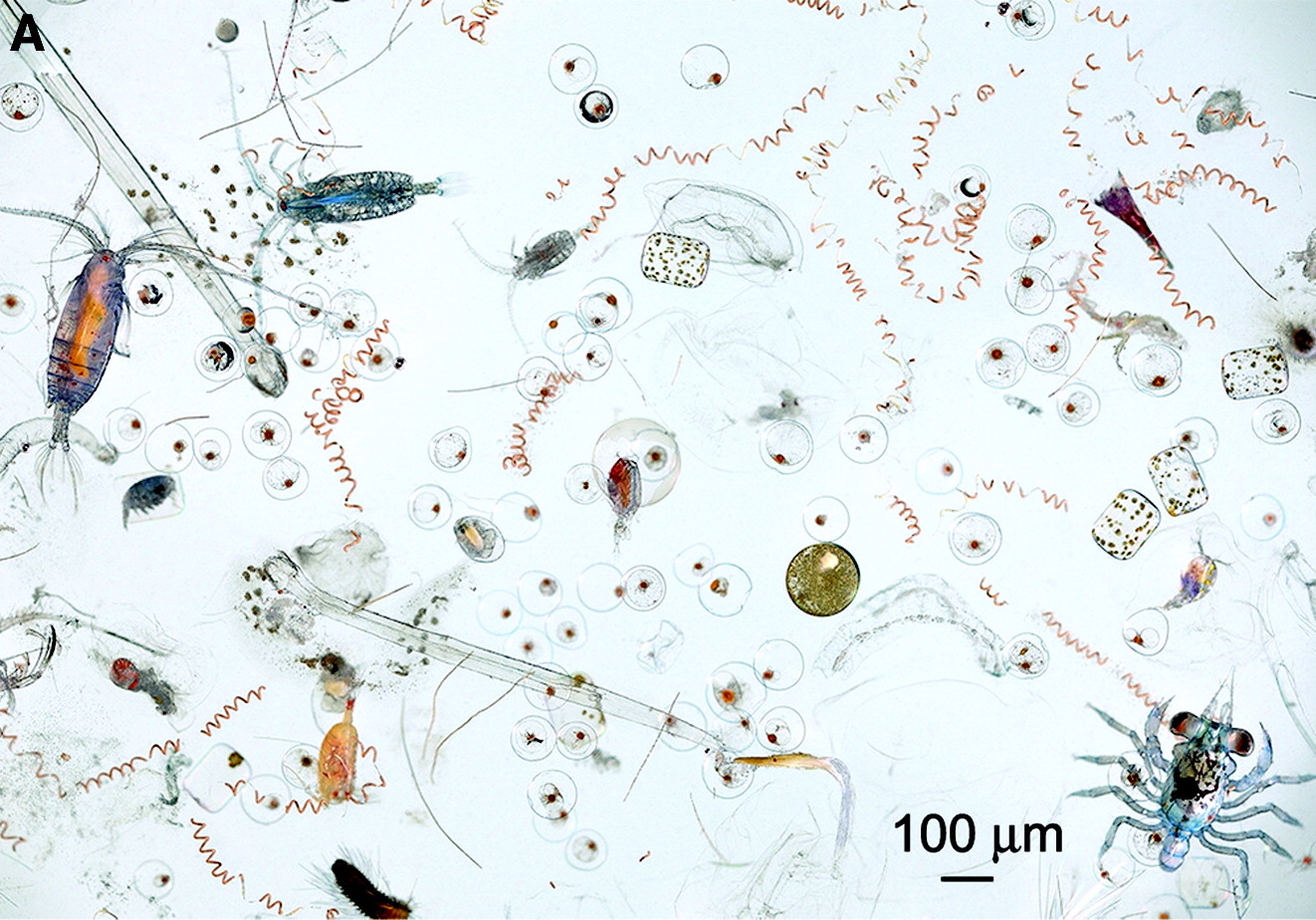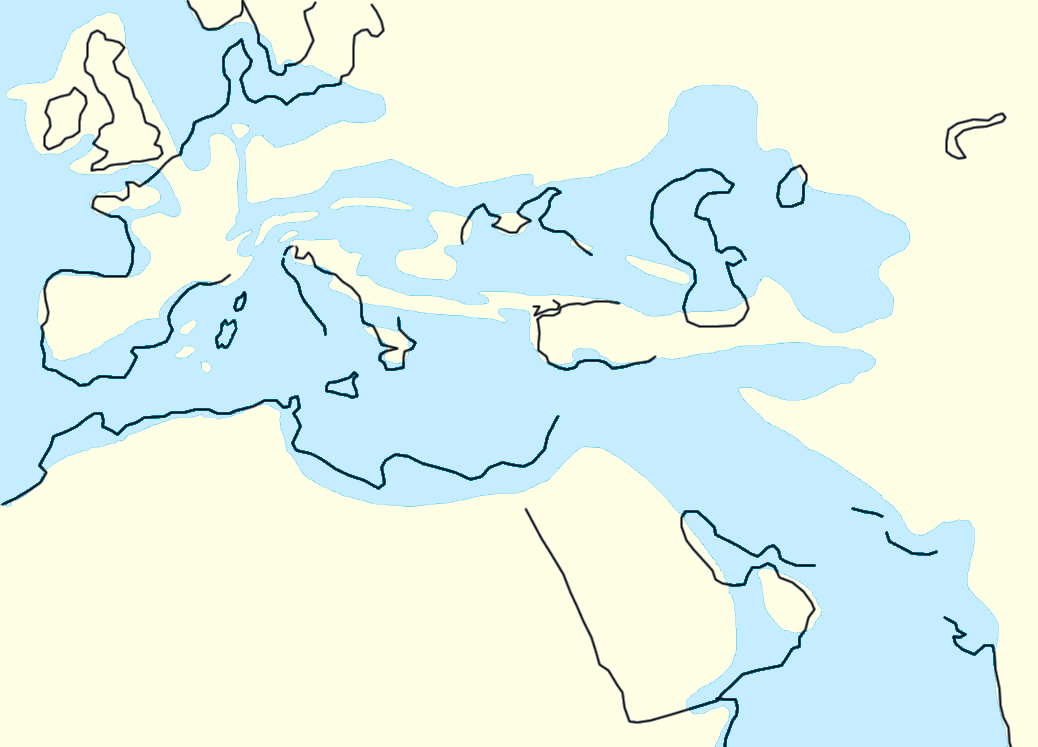|
Priabonian First Appearances
The Priabonian is, in the International Commission on Stratigraphy, ICS's geologic timescale, the latest age (geology), age or the upper stage (stratigraphy), stage of the Eocene epoch (geology), Epoch or series (stratigraphy), Series. It spans the time between . The Priabonian is preceded by the Bartonian and is followed by the Rupelian, the lowest stage of the Oligocene. Stratigraphic definition The Priabonian Stage was introduced in scientific literature by Ernest Munier-Chalmas and Albert de Lapparent in 1893. The stage is named after the small hamlet of Priabona (Monte di Malo), Priabona in the community of Monte di Malo, in the Veneto region of northern Italy. The base of the Priabonian Stage is at the first appearance of calcareous Plankton#Size groups, nannoplankton species ''Chiasmolithus oamaruensis'' (which forms the base of nanoplankton biozone NP18). An official GSSP was ratified in 2020, and was placed in the Alano di Piave section in Alano di Piave, Belluno, Ital ... [...More Info...] [...Related Items...] OR: [Wikipedia] [Google] [Baidu] |
International Commission On Stratigraphy
The International Commission on Stratigraphy (ICS), sometimes referred to unofficially as the "International Stratigraphic Commission", is a daughter or major subcommittee grade scientific daughter organization that concerns itself with stratigraphical, geological, and geochronological matters on a global scale. It is the largest subordinate body of the International Union of Geological Sciences (IUGS). The ICS is essentially a permanent working subcommittee, which meets far more regularly than the quadrennial meetings scheduled by the IUGS, when it meets as a congress or membership of the whole. Aims One of its main aims, a project begun in 1974, is to establish a multidisciplinary standard and global geologic time scale that will ease paleontological and geobiological comparisons region to region by benchmarks with stringent and rigorous strata criteria called Global Boundary Stratotype Section and Points (GSSPs) within the fossil record. (i.e. section of the rock rec ... [...More Info...] [...Related Items...] OR: [Wikipedia] [Google] [Baidu] |
Epoch (geology)
The geologic time scale, or geological time scale, (GTS) is a representation of time based on the rock record of Earth. It is a system of chronological dating that uses chronostratigraphy (the process of relating strata to time) and geochronology (scientific branch of geology that aims to determine the age of rocks). It is used primarily by Earth scientists (including geologists, paleontologists, geophysicists, geochemists, and paleoclimatologists) to describe the timing and relationships of events in geologic history. The time scale has been developed through the study of rock layers and the observation of their relationships and identifying features such as lithologies, paleomagnetic properties, and fossils. The definition of standardized international units of geologic time is the responsibility of the International Commission on Stratigraphy (ICS), a constituent body of the International Union of Geological Sciences (IUGS), whose primary objective is to precisel ... [...More Info...] [...Related Items...] OR: [Wikipedia] [Google] [Baidu] |
Alano Di Piave
Alano di Piave is a ''comune'' (municipality) in the province of Belluno in the Italian region of Veneto, located about northwest of Venice and about southwest of Belluno. As of 31 December 2004, it had a population of 2,886 and an area of .All demographics and other statistics: Italian statistical institute Istat. Alano di Piave borders the following municipalities: Cavaso del Tomba, Paderno del Grappa, Pederobba, Possagno, Quero, Segusino, Seren del Grappa, Valdobbiadene Valdobbiadene () is a town in the province of Treviso, Veneto, Italy. Valdobbiadene is a wine growing area. Just below the Alpine-Dolomite areas of Veneto, it provides a climate for a cool variety of grape (Glera). The Conegliano Valdobbiadene ar .... Demographic evolution Colors= id:lightgrey value:gray(0.9) id:darkgrey value:gray(0.8) id:sfondo value:rgb(1,1,1) id:barra value:rgb(0.6,0.7,0.8) ImageSize = width:455 height:303 PlotArea = left:50 bottom:50 top:30 right:30 DateFormat = x.y ... [...More Info...] [...Related Items...] OR: [Wikipedia] [Google] [Baidu] |
GSSP
A Global Boundary Stratotype Section and Point (GSSP) is an internationally agreed upon reference point on a stratigraphic section which defines the lower boundary of a stage on the geologic time scale. The effort to define GSSPs is conducted by the International Commission on Stratigraphy, a part of the International Union of Geological Sciences. Most, but not all, GSSPs are based on paleontological changes. Hence GSSPs are usually described in terms of transitions between different faunal stages, though far more faunal stages have been described than GSSPs. The GSSP definition effort commenced in 1977. As of 2022, 77 of the 101 stages that need a GSSP have a ratified GSSP. Rules A geologic section has to fulfill a set of criteria to be adapted as a GSSP by the ICS. The following list summarizes the criteria: * A GSSP has to define the lower boundary of a geologic stage. * The lower boundary has to be defined using a primary marker (usually first appearance datum of a ... [...More Info...] [...Related Items...] OR: [Wikipedia] [Google] [Baidu] |
Biozone
In biostratigraphy, biostratigraphic units or biozones are intervals of geological strata that are defined on the basis of their characteristic fossil taxa, as opposed to a lithostratigraphic unit which is defined by the lithological properties of the surrounding rock. A biostratigraphic unit is defined by the zone fossils it contains. These may be a single taxon or combinations of taxa if the taxa are relatively abundant, or variations in features related to the distribution of fossils. The same strata may be zoned differently depending on the diagnostic criteria or fossil group chosen, so there may be several, sometimes overlapping, biostratigraphic units in the same interval. Like lithostratigraphic units, biozones must have a type section designated as a stratotype. These stratotypes are named according to the typical taxon (or taxa) that are found in that particular biozone. The boundary of two distinct biostratigraphic units is called a ''biohorizon''. Biozones can be f ... [...More Info...] [...Related Items...] OR: [Wikipedia] [Google] [Baidu] |
Plankton
Plankton are the diverse collection of organisms found in water (or air) that are unable to propel themselves against a current (or wind). The individual organisms constituting plankton are called plankters. In the ocean, they provide a crucial source of food to many small and large aquatic organisms, such as bivalves, fish and whales. Marine plankton include bacteria, archaea, algae, protozoa and drifting or floating animals that inhabit the saltwater of oceans and the brackish waters of estuaries. Freshwater plankton are similar to marine plankton, but are found in the freshwaters of lakes and rivers. Plankton are usually thought of as inhabiting water, but there are also airborne versions, the aeroplankton, that live part of their lives drifting in the atmosphere. These include plant spores, pollen and wind-scattered seeds, as well as microorganisms swept into the air from terrestrial dust storms and oceanic plankton swept into the air by sea spray. Though m ... [...More Info...] [...Related Items...] OR: [Wikipedia] [Google] [Baidu] |
Veneto
it, Veneto (man) it, Veneta (woman) , population_note = , population_blank1_title = , population_blank1 = , demographics_type1 = , demographics1_footnotes = , demographics1_title1 = , demographics1_info1 = , demographics1_title2 = , demographics1_info2 = , demographics1_title3 = , demographics1_info3 = , timezone1 = CET , utc_offset1 = +1 , timezone1_DST = CEST , utc_offset1_DST = +2 , postal_code_type = , postal_code = , area_code_type = ISO 3166 code , area_code = IT-34 , blank_name_sec1 = GDP (nominal) , blank_info_sec1 = €163 billion (2018) , blank1_name_sec1 = GDP per capita , blank1_info_sec1 = €33,200 (2018) , blank2_name_sec1 = HDI (2019) , blank2_info_sec1 = 0.900 · 9th of 21 , blank_name_sec2 = NUTS Region , blank_info_sec2 = ITD , websi ... [...More Info...] [...Related Items...] OR: [Wikipedia] [Google] [Baidu] |
Monte Di Malo
Monte di Malo is a town in the province of Vicenza, Veneto, Italy. It is west of the road SP46. The hamlet of Priabon in the commune gives its name to the Priabonian Age of the Eocene The Eocene ( ) Epoch is a geological epoch that lasted from about 56 to 33.9 million years ago (mya). It is the second epoch of the Paleogene Period in the modern Cenozoic Era. The name ''Eocene'' comes from the Ancient Greek (''ēṓs'', " ... Epoch of geological time. References External links(Google Maps) Cities and towns in Veneto {{Veneto-geo-stub ... [...More Info...] [...Related Items...] OR: [Wikipedia] [Google] [Baidu] |
Priabona (Monte Di Malo)
Priabona may refer to: * Priabona (fly), a fossil genus of big-headed flies * Priabona (Monte di Malo), the northern Italy type locality of the Priabonian stratigraphic stage {{Disambiguation ... [...More Info...] [...Related Items...] OR: [Wikipedia] [Google] [Baidu] |
Albert De Lapparent
Albert Auguste Cochon de Lapparent (30 December 18395 May 1908) was a French geologist. Life He was born at Bourges. After studying at the École polytechnique from 1858 to 1860 he became ''ingénieur au corps des mines'', and took part in drawing up the geological map of France; and in 1875 he was appointed professor of geology and mineralogy at the Catholic Institute in Paris. In 1879 he prepared an important memoir for the geological survey of France on the Pays de Bray, a subject on which he had already published several memoirs, and in 1880 he served as president of the Société Géologique de France. In 1881-1883 he published his ''Traité de géologie'', a well-regarded textbook of stratigraphy. His other works include ''Cours de minéralogie'' (1884), ''La formation des combustibles minéraux'' (1886), ''Le niveau de la mer et ses variations'' (1886), ''Les tremblements de terre'' (1887), ''La géologie en chemin de fer'' (1888), ''Précis de minéralogie'' (1888), '' ... [...More Info...] [...Related Items...] OR: [Wikipedia] [Google] [Baidu] |
Ernest Munier-Chalmas
Ernest Charles Philippe Auguste Munier-Chalmas (7 April 1843 – 9 August 1903) was a French geologist, born at Tournus in Burgundy, who is known for his contributions to the understanding of the Cretaceous, but who also isolated and defined the Priabonian stage of the Late Eocene, in a paper co-written with Albert de Lapparent in 1893. From 1864 he worked as an assistant in the geology department at the Sorbonne, and subsequently participated in geological missions to Austria-Hungary and the Venetian Alps. From 1882 he taught classes at the École Normale Supérieure, and in 1891 became a professor of geology at the Sorbonne. In addition, from 1892 to 1903, he was director of studies at the École pratique des hautes études.Munier-Chalmas, Charles Philippe Ernest Sociétés savantes de France In 1873 he described the < ... [...More Info...] [...Related Items...] OR: [Wikipedia] [Google] [Baidu] |
Oligocene
The Oligocene ( ) is a geologic epoch of the Paleogene Period and extends from about 33.9 million to 23 million years before the present ( to ). As with other older geologic periods, the rock beds that define the epoch are well identified but the exact dates of the start and end of the epoch are slightly uncertain. The name Oligocene was coined in 1854 by the German paleontologist Heinrich Ernst Beyrich from his studies of marine beds in Belgium and Germany. The name comes from the Ancient Greek (''olígos'', "few") and (''kainós'', "new"), and refers to the sparsity of extant forms of molluscs. The Oligocene is preceded by the Eocene Epoch and is followed by the Miocene The Miocene ( ) is the first geological epoch of the Neogene Period and extends from about (Ma). The Miocene was named by Scottish geologist Charles Lyell; the name comes from the Greek words (', "less") and (', "new") and means "less recent" ... Epoch. The Oligocene is the third and final epoch of ... [...More Info...] [...Related Items...] OR: [Wikipedia] [Google] [Baidu] |



